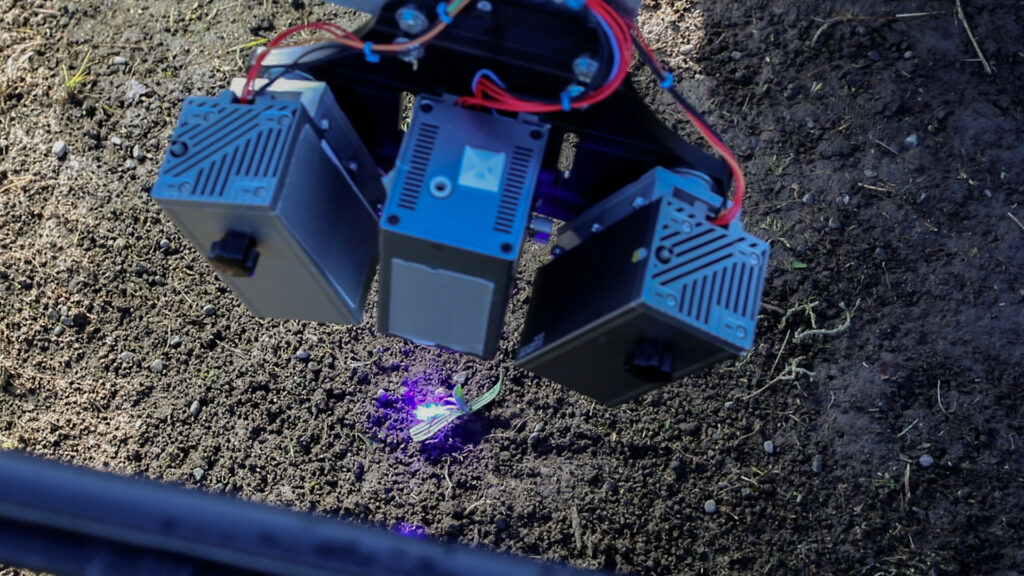New laser system targets weeds, boosts productivity

A team of scientists and engineers in New Zealand has created a laser technology that targets and eliminates weeds with precision. The AI-driven system can be fitted to a tractor or robot to suit the production system it is operating in.
According to Founder Kioumars Ghamkhar of Map and Zap, the unit can be used in a vineyard, an orchard, a field growing vegetables or pasture for example. The AI technology can distinguish between different species of weed, and targets only plants that are unwanted.
Ghamkhar found the inspiration for the technology by talking to farmers about the sustainable control of weeds, and his love for the Star Wars movies. “One farmer told me that she was frustrated with the weeds on her farm, their resistance to chemicals and the fact that they kept coming back.”
“Because our technology targets small, early germinating weeds, it dilutes the seed bank and prevents widespread infestations. It offers a new tech pathway that, over time, can reduce our need to reach for the spray.”
Text continues below picture

Different agricultural settings
The New Zealand-based team currently has a working prototype. The system is designed to be used in different agricultural settings, and the team is now looking for potential investors to take the technology to domestic and overseas markets.
“The direction we will take, depends on future investment”, Ghamkhar explains. “If we want to go to a full product, we need a purpose. We have already successfully used it in vineyards and pastures, two very challenging situations. We are basically capable to operate the unit in any setup. In the long term I would also like to use the unit in canola and wheat.”
Map and Zap is targeting early stage growth of weeds, when weeds are vulnerable. The technology has been tested on herbicide resistant weeds, and could be useful in many crops and countries. “We are eliminating them physically, so I am sure they won’t come back. The potential for Map and Zap is truly global“, Ghamkhar says.
Text continues below video
The yield of the crop
“We are currently doing some demonstrations, and I have talked to many farmers. I am sure there is a market for it. It helps both the productivity on the farm and the environment. Weeds effect the yield of the crop. When you detect them early and zap them, productivity increases.”
Two batteries provide the energy for the laser-unit, with a range of about 8 hours. “If necessary, we can do night shifts as well. But then lights will also use the batteries. At the moment, we can cover half a hectare per hour with the unit. It can match electric or mechanical weeding systems. With further development, we can increase the speed of the unit to 1.5 hectares or even 2 hectares per hour.”
According to Ghamkhar, the cost of the technology is about three times lower than similar products. “Because we are not selling a robot. Our unit can be fitted to any tractor or robot that a farmer already owns. We also use a very efficient electric system, and don’t use diesel. And it does not have the off-target damage to surrounding crop or pasture that spray technology has.”



